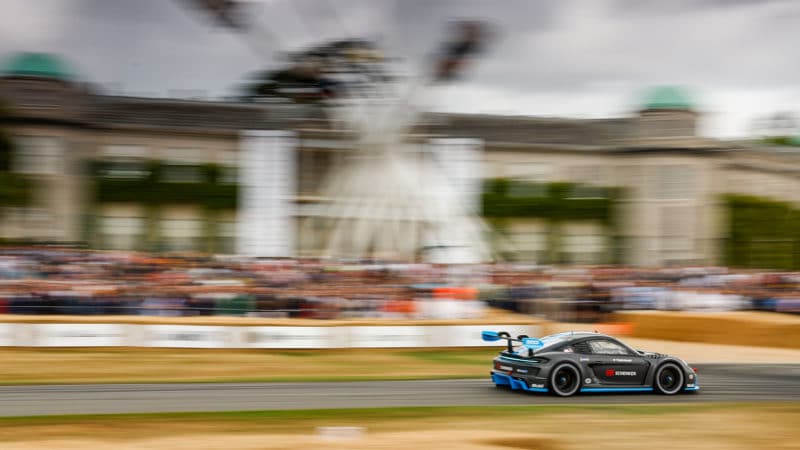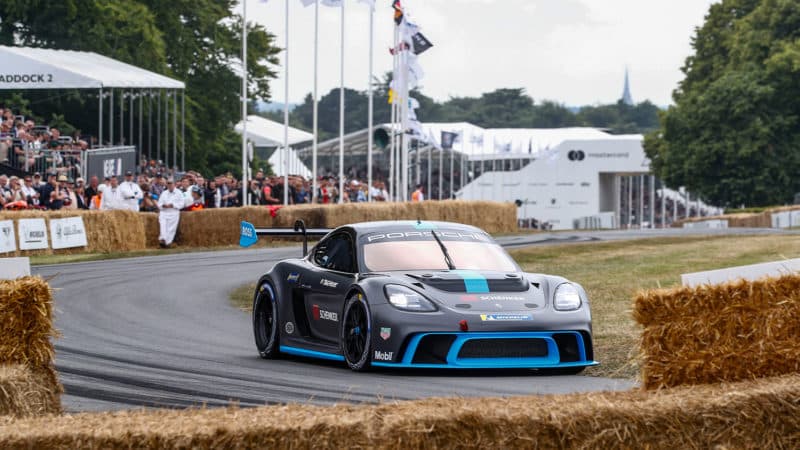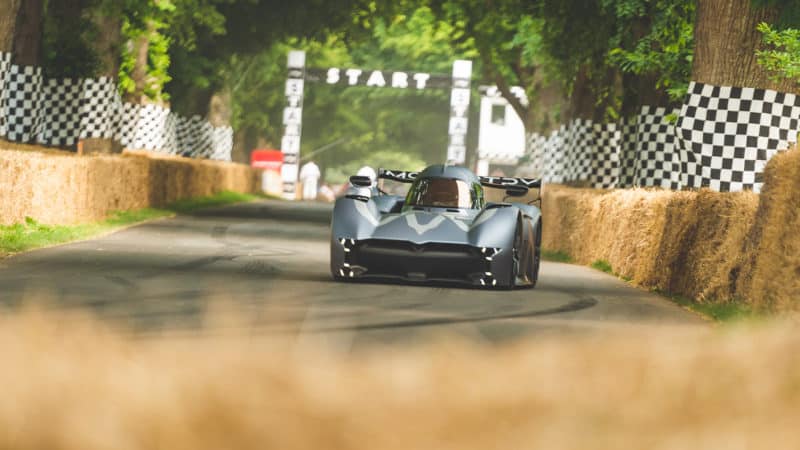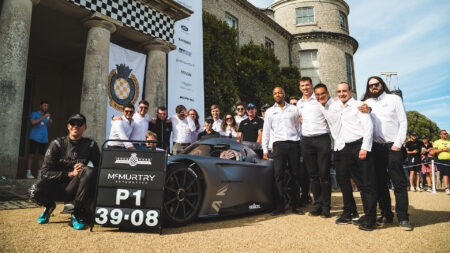Much has been written already about the McMurtry so I won’t dwell on it too much here, but I’d be lying if I said I felt no pride at all in seeing this little British start-up break the record set by Volkswagen ID.R, a car built with the kinds of funds only the world’s largest car manufacturer could produce. And it did it by being clever: clever because the fan system produced two tonnes of downforce at rest. To get that at the kind of quite modest speeds you reach on the Goodwood hill, you need massive aero devices which also produce drag. The McMurtry doesn’t need them, so not only does it have the downforce at low speed that you want, it neatly sidesteps the drag at high speed you do not. And it doesn’t need a heavy four wheel drive system for the same reason: with that much suction on the start line you’d not break traction even putting 500bhp through each rear wheel. And its incredibly compact dimensions mean you can actually take a confident line though even the narrowest of turns on the course.
As an aside does raise the issue of whether fan cars are the next big thing, and I suspect probably not. There’s nothing new about them, as anyone who can recall the Chaparral 2J of 1970 will attest: that used a skidoo motor to power fans that did the same job then as the McMurtry’s electric motor does now. There was also of course Gordon Murray’s Brabham fan car. I think the problem is that once you go down that road, it’s very hard to stop. Gordon once told me he was quite glad the BT45B was withdrawn (it was never banned), ‘because the one I had on the drawing board would have pulled the driver’s head off.’ He was exaggerating for effect of course; at least I think he was…
There is a more subtle way of doing it, as he has more recently on his GMA T.50 road car, where the fan is used to create downforce indirectly by controlling the airflow’s boundary layer but whether that is viable for competition I couldn’t say. What I can say if I’d not want to be trying to follow a conventional fan car in a race, because even if filters mean it doesn’t actually chuck stones at you, you only had to look at the fog of dust that followed the McMurtry to see one more reason why such cars are perfect for hill-climbing.
Returning to the EVs, I found myself approaching the start line behind the Porsche Cayman GT4 ePerformance, a 1000bhp electric showcase of the way Porsche is thinking about customer racing cars in the EV era. Richard Lietz was driving, fresh from his GT Pro win at Le Mans, and when he left the line it was like watching something from Santa Pod. I once described an F1 car I’d driven as appearing to accelerate from one speed to the next by ‘seemingly leaving out all the speeds in between’ and I can do no better than that today. One moment it was there, fizzing away on that thin line of Indianapolis brick, the next it was turning into the first corner. I can remember thinking how very uncomfortable it must have been for its occupant.
But so too was it thrilling to watch, not to mention the second-fastest car up the Goodwood hill over the weekend. Having tried and failed to find anything genuinely entertaining in the spectacle that is Formula E, I found the performance of the EV cars at Goodwood as well as a certain almost-2000bhp Transit van made for compelling viewing. Indeed I found myself as full of anticipation for each one’s next mad outing as for the very best of the petrol powered machines. I expect there will be more and more of these machines at Goodwood and if they’re as exciting as this, I can’t wait to see them.




